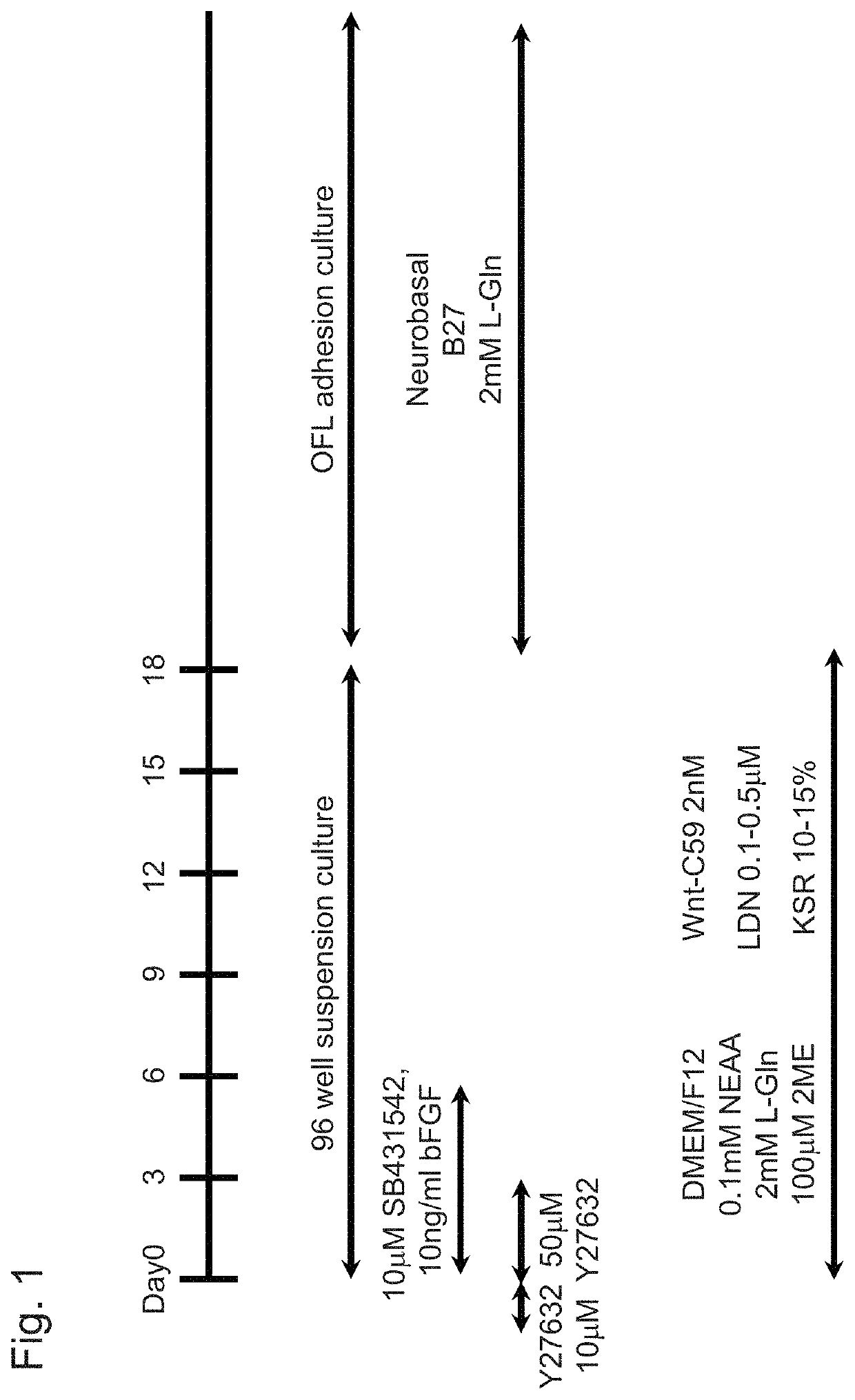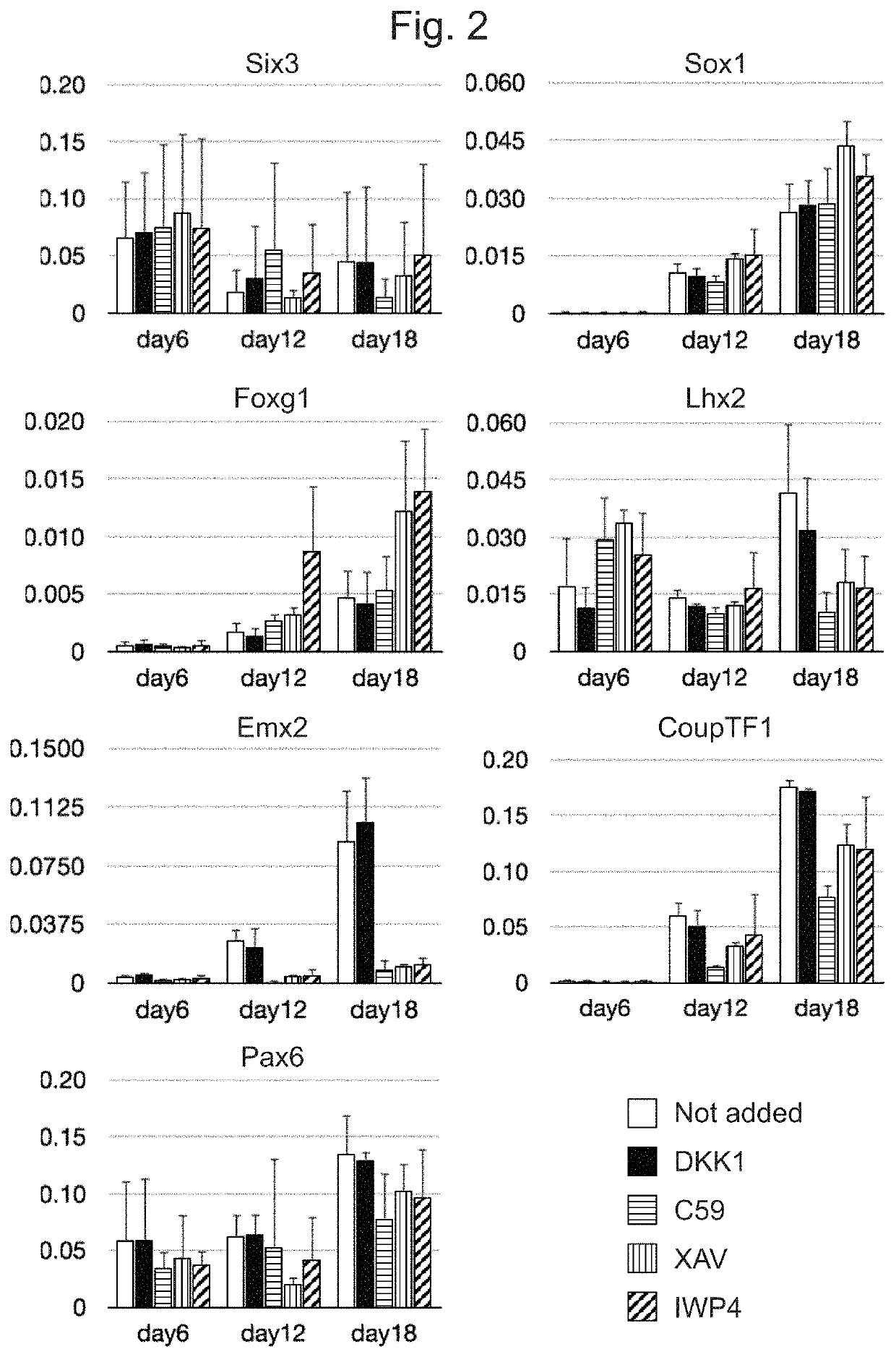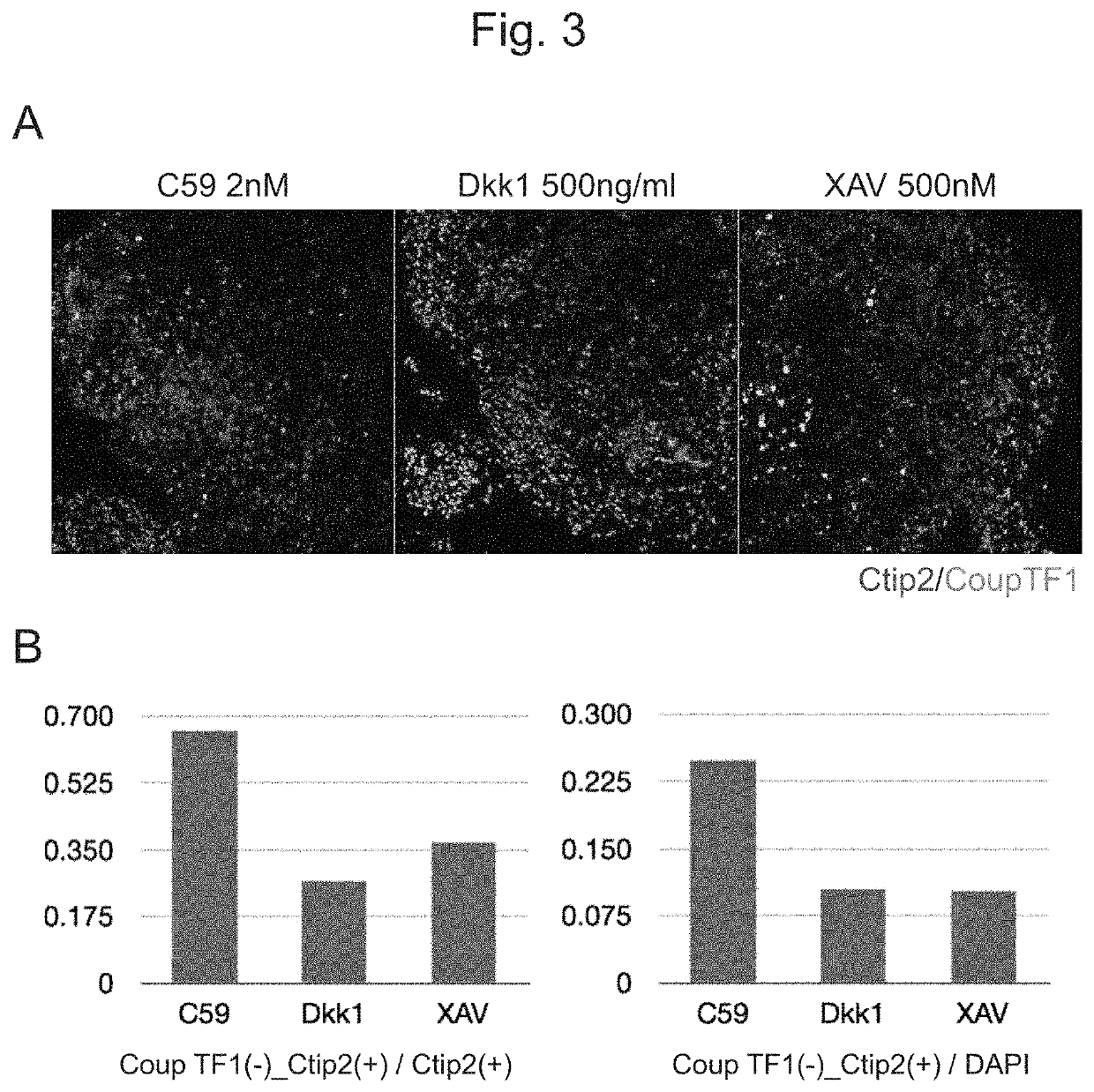Method for inducing cerebral cortex neurons
a cerebral cortex and neuron technology, applied in the direction of skeletal/connective tissue cells, drug compositions, embryonic cells, etc., can solve the problems of many patients needing care, cerebral infarction is a serious disease, etc., and achieve the effect of efficient production of cerebral cortex neurons
- Summary
- Abstract
- Description
- Claims
- Application Information
AI Technical Summary
Benefits of technology
Problems solved by technology
Method used
Image
Examples
example 1
Cells
[0100]Human ES cells (KhES-1) were obtained from Institute for Frontier Medical Sciences, Kyoto University (Suemori H, et al. Biochem Biophys Res Commun. 345: 926-32, 2006). The human iPS cells 404C2 are cells obtained by introducing Oct3 / 4, Sox2, Klf4, L-MYC, LIN28 and p53shRNA into human fibroblasts, using an episomal vector, and these cells were obtained from Professor Yamanaka et al. in Kyoto University (Okita, et al, Nat Methods. 8: 409-412, 2011). The human iPS cells 836B1 are cells obtained by introducing Oct3 / 4, Sox2, Klf4, L-MYC, LIN28, GLIS1 and p53shRNA into human fibroblasts, using an episomal vector, and these cells were obtained from Professor Yamanaka et al. in Kyoto University. The ES cells and the iPS cells were cultured on SNL cells (Takahashi K, et al, Cell. 131: 861-872, 2007).
Method for Inducing Differentiation of Cerebral Cortex
[0101]On the day before induction of differentiation, in order to separate the ES cells or the iPS cells, which had been cultured ...
example 2
Culture of iPS Cells
[0111]The iPS cells (836B1) were cultured according to the method described in Miyazaki T et al., Nat Commun. 3: 1236, 2012. Briefly, the iPS cells were cultured on a 6-well plate coated with Laminin 511E8.
Modification of Method of Inducing Differentiation of Cerebral Cortex
[0112]The iPS cells (836B1) were dissociated using Accumax, and were then transferred on a 96-well plate (Lipidure-coat 96-well plate) in an amount of 9×103 cells per well. Thereafter, the cells were subjected to a suspension culture in DMEM / F12 comprising 50 μM Y-27632, 10 μM SB43152, 10 ng / ml bFGF, 50 nM C59, 0.1 μM LDN193189, 10% KSR, 0.1 mM MEM non-essential amino acid, 0.1 mM 2-mercaptoethanol, and 2 mM L-Gln (initiation of differentiation induction, day 0). Three days after the initiation of differentiation induction, the medium was exchanged with the same medium as described above, which did not comprise Y-27632 (day 3). Three days later, the medium was exchanged with DMEM / F12 comprisin...
example 3
Modification of Method of Inducing Differentiation of Cerebral Cortex
[0116]The iPS cells (836B1), which had been cultured using Laminin 511E8 under feeder-free conditions, were dissociated using Accumax, and were then transferred on a 96-well plate (Lipidure-coat 96-well plate) in an amount of 9×103 cells per well. Thereafter, the cells were subjected to a suspension culture in DMEM / F12 comprising 50 μM Y-27632, 10 μM SB43152, 10 ng / ml bFGF, 10 nM-50 nM C59, 0.1 μM LDN193189, 10% KSR, 0.1 mM MEM non-essential amino acid, 0.1 mM 2-mercaptoethanol, and 2 mM L-Gln (initiation of differentiation induction, day 0). Three days after the initiation of differentiation induction, the medium was exchanged with the same medium as described above, which did not comprise Y-27632 (day 3). Three days later, the medium was exchanged with DMEM / F12 comprising 10 nM-50 nM C59, 0.1 μM LDN193189, 10% KSR, 0.1 mM MEM non-essential amino acid, 0.1 mM 2-mercaptoethanol, and 2 mM L-Gln (day 6). Thereafter, ...
PUM
| Property | Measurement | Unit |
|---|---|---|
| frequency | aaaaa | aaaaa |
| color | aaaaa | aaaaa |
| phase contrast image | aaaaa | aaaaa |
Abstract
Description
Claims
Application Information
 Login to View More
Login to View More - R&D Engineer
- R&D Manager
- IP Professional
- Industry Leading Data Capabilities
- Powerful AI technology
- Patent DNA Extraction
Browse by: Latest US Patents, China's latest patents, Technical Efficacy Thesaurus, Application Domain, Technology Topic, Popular Technical Reports.
© 2024 PatSnap. All rights reserved.Legal|Privacy policy|Modern Slavery Act Transparency Statement|Sitemap|About US| Contact US: help@patsnap.com










